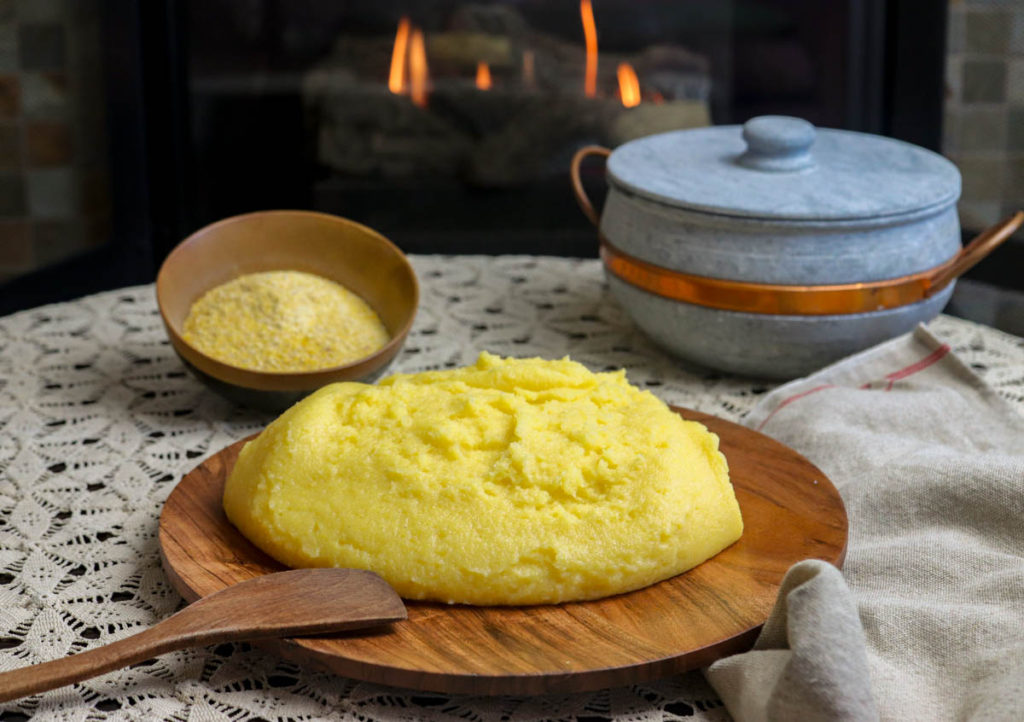Polenta is one of the most ancient methods of cooking ground grains – like millet, barley, buckwheat or spelt – or dry ground legumes – like garbanzo or fava beans.
With the introduction of corn from America, this grain replaced many of the previously used ones because corn flour can withstand extended cooking times without compromising the result. This is why it turned out to be ideal to replace bread in the countryside: while bread takes a lot of time to make, polenta could be left to cook for hours in a pot hanging from a hook in the fireplace, while men worked in the fields and women tended to their household chores.
Polenta is usually cooked in the cold months since cornmeal tends to get rancid in the summer. It’s typically served with meat stews, mushrooms, and soft fat cheese like gorgonzola, taleggio, or fontina, but it’s equally delicious with a ratatouille or as a side dish.
Ingredients:
(serves 4) F W V B Gf Df Ef
- 2 ½ cups of yellow corn meal
- 6 cups of water
- 2 tsp. of salt
Bring the water to a boil in a pot, lower the heat, add the salt and gradually add the cornmeal, stirring with a whisk to avoid forming any lumps.
The mix will look runny, but don’t be deceived because it will thicken as it cooks.
Cook for at least 50 minutes, uncovered and stirring as often as possible. It’s normal that the bottom part gets burned and sticks to the pot. This will give your polenta a nice smoky taste without ruining the pot. Simply soak the pot overnight in cold water and the crust will soften, to be easily removed.

